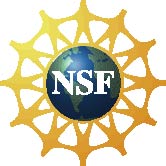WordNet::SenseRelate
The
SenseRelate project
seeks to use measures of semantic similarity and relatedness to perform
word sense disambiguation.
We have two different word sense disambiguation algorithms, an
"all words" version (WordNet-SenseRelate-AllWords) and a lexical sample
version (WordNet-SenseRelate-TargetWord). The all words algorithm assigns
a sense to each word in a text, and the lexical sample version assigns a
sense to a given target word. There is also a third program which selects
the sense of a word that is most related to a given set of words
(WordNet-SenseRelate-WordToSet).
All of these assign meanings as found in the lexical database WordNet.
They carry out word sense disambiguation by measuring the semantic
similarity between a word and its neighbors. In particular, a word is
assigned the sense that is most related to its neighbors. The measures of
similarity are from wn-similarity,
which is also distributed via CPAN as
WordNet::Similarity.
-
WordNet::SenseRelate::AllWords
WordNet::SenseRelate::AllWords is an "all words" disambiguation algorithm
and assigns a meaning to every content word in a text.
Download the most current version of WordNet-SenseRelate-AllWords from CPAN
or
SourceForge (v0.19 released May 28, 2009)
Check out the
Web Interface to AllWords here
maraca.d.umn.edu
(v0.19).
-
WordNet::SenseRelate::WordToSet
WordNet::SenseRelate::WordToSet assigns the meaning to a word that is most
related to a given set of words.
Download the most current version of WordNet-SenseRelate-WordToSet from CPAN
or
SourceForge (v0.04 released April 6, 2008)
-
WordNet::SenseRelate::TargetWord
WordNet::SenseRelate::TargetWord is an "lexical sample" disambiguation
algorithm that assigns a meaning to one content word per context.
Download the most current version of WordNet-SenseRelate-TargetWord from CPAN
or
SourceForge (v0.09 released December 24, 2006)
We have mailing lists
for
users and
news and
developers. The mailing lists may be used to discuss any of these
packages.
SenseRelate Development Team
Acknowledgments
The development of SenseRelate has been supported by a National
Science Foundation
Faculty Early Career Development (CAREER) Program
award (#0092784, 2001-2007), by a Grant in Aid of Research, Artistry and
Scholarship from the Graduate School of the University of Minnesota
(2003-2004), and by the Digital Technology Initiative of the Digital
Technology Center of the University of Minnesota (2004-2005).



By:
Ted Pedersen
- tpederse AT d umn edu

